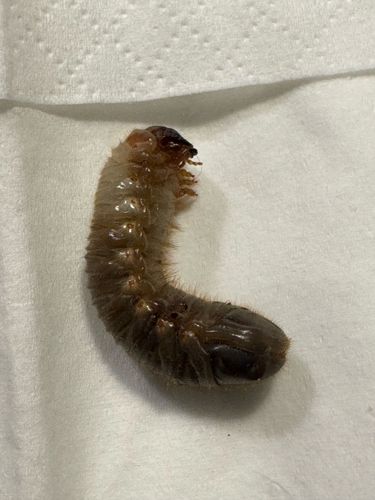Grub (Beetle Larva)
Scientific Name: Various species within Scarabaeidae (e.g., Phyllophaga spp., Popillia japonica, Rhizotrogus majalis)
Order & Family: Order: Coleoptera, Family: Scarabaeidae (Scarab Beetles)
Size: Typically 1 to 5 cm (0.4 to 2 inches) in length, depending on the species and larval instar.

Natural Habitat
Primarily underground in soil, especially in lawns, gardens, agricultural fields, and areas with decaying organic matter (e.g., compost piles, under logs). They prefer moist conditions.
Diet & Feeding
Grubs are primarily root feeders. They consume the roots of grasses, ornamental plants, vegetables, and other crops. Some species may also feed on decaying wood or organic matter.
Behavior Patterns
Grubs are larvae of various beetle species. They are C-shaped, soft-bodied, and typically white or grayish with a distinct brown head capsule and three pairs of legs near the head. They spend most of their larval stage underground, feeding on roots. Their life cycle varies by species but generally involves overwintering as larvae, pupating in spring, and emerging as adult beetles in late spring or summer. They are often found curled up when disturbed.
Risks & Benefits
Potential risks: Grubs can be significant agricultural and horticultural pests, causing damage to lawns, golf courses, and crops by feeding on roots, leading to wilting, yellowing, and death of plants. Large infestations can severely damage turf and reduce crop yields. Potential benefits: Some species may contribute to decomposition of organic matter. They also serve as a food source for various birds and other animals.
Identified on: 9/12/2025